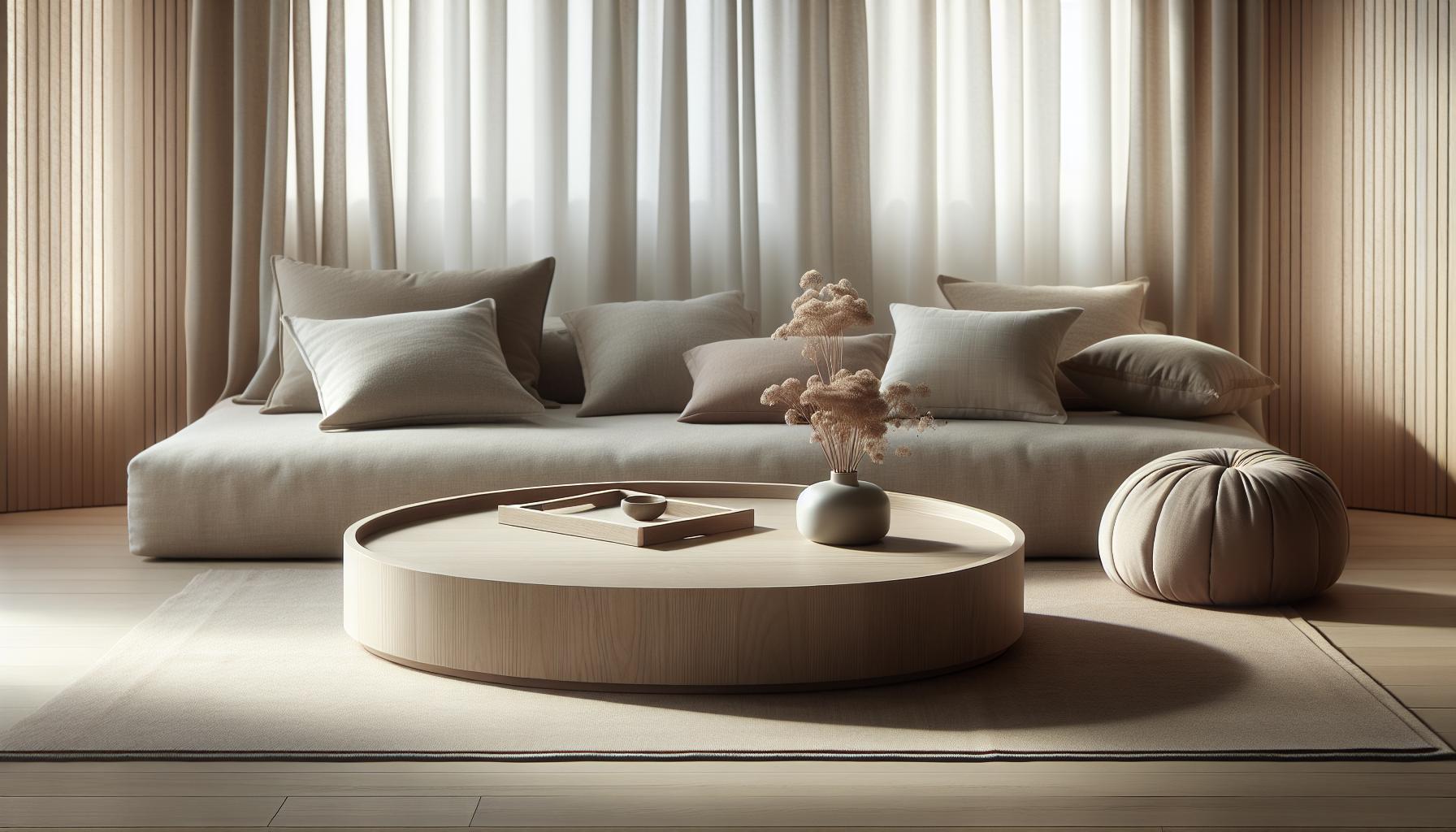How do you envision your ideal living space? Is it a blend of minimalism and warmth, where every piece of furniture is thoughtfully chosen to create a harmonious environment? If you’re leaning towards that serene aesthetic, you might be intrigued by the concept of Japandi design, particularly with its emphasis on low-profile furniture.
Understanding Japandi Design
Japandi design is a beautiful marriage of Japanese and Scandinavian influences. It embodies simplicity, functionality, and a deep appreciation for craftsmanship, while also introducing a sense of cozy warmth. By integrating the clean lines and minimalism typical of Scandinavian design with the tranquility and natural materials of Japanese aesthetics, Japandi spaces evoke a peaceful yet stylish atmosphere.
Key Principles of Japandi
-
Minimalism
A core tenet of Japandi design is minimalism. You focus on what truly matters, eliminating excess to create a calm space. -
Functionality
Every item in a Japandi space serves a purpose. This thoughtful selection enhances the functionality of the area, ensuring that your home works for you. -
Natural Materials
Japandi embraces natural materials such as wood, stone, and textiles. They contribute warmth and texture, creating a sense of connection to nature. -
Neutral Color Palette
Soft, neutral colors dominate Japandi interiors. This palette creates a soothing environment, promoting relaxation and focused living. -
Balance
The fusion of Japanese and Scandinavian elements strikes a perfect balance. You find harmony between simplicity and comfort that transcends trends.
The Role of Low-Profile Furniture in Japandi Spaces
So, how does low-profile furniture fit into the Japandi aesthetic? Low-profile furniture helps in defining Japandi spaces by creating an unobtrusive yet inviting ambiance.
What Is Low-Profile Furniture?
Low-profile furniture is characterized by its lower height compared to traditional furniture. These pieces often sit closer to the ground, which can immediately affect the spatial dynamics of a room.
Benefits of Low-Profile Furniture
Low-profile furniture has several advantages that align well with the principles of Japandi design:
-
Enhanced Space Perception
By sitting lower, these pieces create an illusion of space, making a room feel larger and more open. This is especially beneficial in smaller homes where maximizing space is crucial. -
Cohesion and Flow
Low-profile items are visually lighter, promoting a sense of flow between different areas in your home. They guide the eye across the space without interruptions. -
Comfort and Accessibility
These pieces often provide a sense of coziness and encourage relaxation. Additionally, they are more accessible for children and anyone who may have difficulty using standard-height furniture.
Incorporating Low-Profile Furniture into Your Japandi Space
Bringing low-profile furniture into your home requires thoughtful consideration. Here are some elements you might focus on:
Sofas and Seating
When you consider sofas and seating arrangements, search for designs that emphasize clean lines and natural fabrics.
- Example: A low-profile sectional sofa adorned with earthy textiles can serve as a comfortable gathering point in your living room.
Tables
Low-profile coffee tables or side tables can enhance your space while maintaining an open feel.
- Example: A low wooden coffee table in a light finish complements a muted color scheme and provides an inviting surface for decor or gatherings.
Beds
Your bedroom can also benefit from low-profile furniture through platform beds that sit closer to the ground.
- Example: A low platform bed made of natural wood not only looks elegant but also encourages a grounded feeling, perfect for promoting restful sleep.
Choosing the Right Materials for Low-Profile Furniture
Selecting the right materials for low-profile furniture is critical to achieving the Japandi aesthetic.
Natural Wood
Natural wood is a staple in Japandi design. The warmth of wood enhances the atmosphere and serves as a beautiful reminder of nature.
Types of Wood to Consider
| Type of Wood | Characteristics |
|---|---|
| Oak | Durable, light in color, and has a classic look |
| Teak | Rich in natural oils, resistant to water, warm tones |
| Ash | Light and flexible, often with a straight grain |
Textiles
The textiles you choose for cushions, throws, and other accents should reinforce the calming vibe of your space. Opt for organic fabrics, such as cotton or linen, to keep a natural feel.
Tip: Stick to a muted color palette for your textiles to maintain cohesion.
Creating a Cohesive Japandi Look
Once you’ve selected your low-profile furniture, you’ll want to ensure everything works together to create a cohesive look.
Maintaining Balance in Design
Balance plays a significant role in a successful Japandi space. Consider these aspects to achieve equilibrium:
-
Color Balance:
Use a consistently soft color palette, integrating various shades that complement one another. -
Material Balance:
Mix textures—smooth wood surfaces can work well with soft textiles, creating a harmonious contrast. -
Proportional Balance:
Consider the scale of your furniture. Place lower pieces beside slightly taller accents to create visual interest without overwhelming the room.
Designing Zones
Creating defined areas within a space can enhance both functionality and aesthetics.
Examples of Functional Zones
| Zone | Description |
|---|---|
| Living Area | A cozy seating arrangement with a low-profile sofa and coffee table encourages relaxation and social interaction. |
| Work Space | A low-profile desk with minimal clutter fosters focus and productivity. |
| Relaxation Nook | A corner with floor cushions and low tables encourages quiet moments and reflection. |
Accessorizing Your Japandi Space
Accessories contribute to the overall warmth and character of your Japandi design. Consider the following elements:
Art and Decorations
Choose artwork that resonates with the natural world or minimalistic themes. Simple line drawings or natural landscapes can add character without overwhelming the space.
Plants
Incorporating greenery is an effective way to add life to your environment. Opt for low-maintenance plants such as succulents or snake plants, which don’t require much care but bring in a fresh feel.
Lighting
Choosing the right lighting fixtures can also elevate your Japandi space. Look for understated designs in warm metal finishes or natural materials.
- Tip: Soft, diffused lighting creates a calming ambiance, perfect for evenings at home.
Caring for Your Low-Profile Furniture
Taking care of your low-profile furniture will help it maintain its beauty and functionality.
Cleaning and Maintenance
-
Regular Dusting:
Dust your furniture regularly to maintain its appearance. -
Gentle Cleaning:
For wood, use a damp cloth followed by a dry cloth to avoid moisture damage.
Preventing Damage
It’s essential to take steps to prevent damage to your low-profile pieces.
-
Use Coasters:
Protect surfaces from water rings and scratches. -
Keep Away from Direct Sunlight:
Direct sunlight can fade colors over time, so consider positioning carefully.
The Impact of Personal Touches
While you aim for a serene, cohesive look, personal touches are what truly make a space feel like home.
How to Add Your Unique Style
Consider incorporating items that tell your story or reflect your travels and interests.
Ideas for Personal Touches
-
Family Photos:
Frame family photos in simple, understated frames. -
Travel Souvenirs:
Display souvenirs from your travels but choose a few significant pieces to avoid clutter. -
Handmade Items:
Items created by yourself or loved ones add a personal touch and warmth.
Embracing Change
As life changes, your space may also need updates. Embracing flexibility is key in maintaining your Japandi aesthetic.
Adjusting Your Furniture Arrangement
Every so often, consider rearranging your furniture to keep your space feeling fresh while maintaining the principles of Japandi design.
Updating Accessories
Changing up your decor seasonally can also keep things interesting without overwhelming the established aesthetic.
In Conclusion
Defining Japandi spaces with low-profile furniture allows you to create a living environment that reflects calm, functionality, and beauty. By choosing the right materials, maintaining balance, and embracing personal touches, your home can be a harmonious blend of simplicity and warmth, echoing the best of both Japanese and Scandinavian influences.
As you consider your design choices, remember to prioritize those elements that resonate with you, ultimately crafting a space where you feel relaxed and truly at home.

